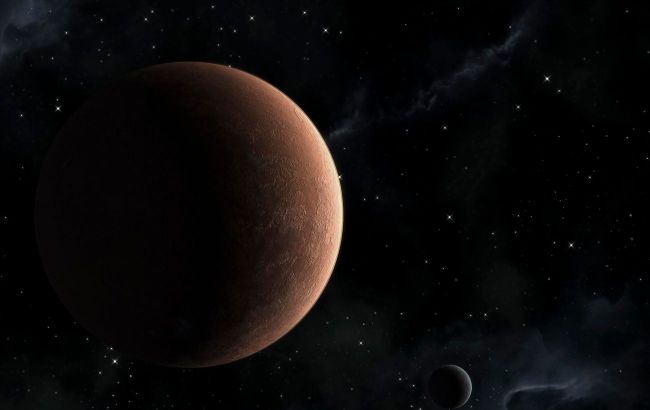New lake found on Mars: Scientists believe water cannot exist there
 Scientists explain why there can't be water on Mars (photo: freepik.com)
Scientists explain why there can't be water on Mars (photo: freepik.com)
Under the icy cap of Mars' southern pole, a lake was found, and for some time, researchers believed it to be made of liquid water. However, scientists now point to a misinterpretation of signals and lean towards the idea that water cannot exist on Mars.
Phys.org provides details about the lake on Mars and why water may not exist there.
Researchers from Cornell University have provided a simple and comprehensive explanation for the bright radar reflections initially interpreted as liquid water under the icy cap of Mars' southern pole.
Their modeling shows that small variations in layers of water ice are too thin to be distinguished by ground-based radar instruments. These variations can cause constructive interference between radar waves.
Such interference can cause reflections, intensity, and variability that correspond to observations to date - not only in the area believed to be liquid water but also in the so-called south-polar layered deposits.
"I can't say it's impossible that there's liquid water down there, but we're showing that there are much simpler ways to get the same observation without having to stretch that far, using mechanisms and materials that we already know exist there. Just through random chance, you can create the same observed signal in the radar," said Daniel Lalich, research associate in the Cornell Center for Astrophysics and Planetary Science.
Rovers have provided numerous pieces of evidence that water flowed on the surface of ancient Mars, including a former river delta currently being explored by the NASA Perseverance rover.
Relying on a radar capable of probing the surface to detect water ice and potentially hidden aquifers, members of the scientific team of the Mars Express orbiter, under the direction of the European Space Agency, announced that they have detected a lake buried under the southern polar cap.
The implications were enormous: where there is liquid water, microbial life could exist. However, while the same bright radar reflections likely indicate a subglacial lake on Earth, the temperature and pressure conditions on Mars are very different.
Using simpler models, Lalich previously demonstrated that bright radar signals can be generated in the absence of liquid water, but he said assumptions about layers of frozen carbon dioxide gas under the icy cap were likely incorrect.
According to him, the new study tells a more complete story, filling gaps in the radar clutter hypothesis with a more realistic modeling approach.
Thousands of randomly generated scenarios of layering were based solely on conditions known to exist at the poles of Mars and varied the composition of ice layers and their distances in a manner expected over tens or hundreds of miles.
These slight adjustments sometimes created bright subsurface signals that matched observations at each of the three frequencies used by the Mars Express orbiter's MARSIS radar instrument, a partnership between NASA and the Italian Space Agency.
Likely for a simple reason, Lalich argues: Radar waves bouncing off layers spaced too closely for the instrument to resolve may be combined, amplifying their peaks and troughs.
While not ruling out the potential for some future detection by more capable instruments, Lalich said he suspects the story of liquid water and potential life on the red planet ended long ago.
"The idea that there would be liquid water even somewhat near the surface would have been really exciting," Lalich said.
Earlier, we wrote about a new study showing that life could exist on Mars.
We also reported on the discovery of a giant object on Mars under which water could be hiding.

